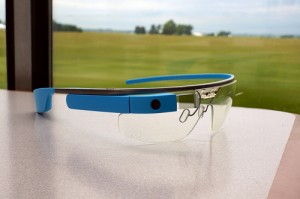The Potential of the Google Glass Classroom

Image by Ted Eytan via Flickr
A guest post by Bill Magana via Bluefire PR
Google’s upcoming wearable computer heads-up display, Google Glass, may still be in the testing phases, but many educators are already considering the possibilities it could unlock in the classroom. Though the technology isn’t yet available to the public, BITE Interactive reports 10 percent of those surveyed said they would purchase and regularly use Glass if it was in their price range.
With Glass being set for a 2014 release, the potential it possesses to change the world of education for the class of 2018 is impressive. Here are just a few ways Google Glass could be incorporated into higher education in the coming years.
The Cyber Student
Google Glass comes standard with a built-in digital camera that can take 720p video with a voice command. Teachers could soon become capable of taking students on augmented field excursions for biology courses, without students having to even be in the same country as the research site. Corporate Tech Decisions reports Google Glass is already being utilized by doctors to film surgeries to share with students of both science and medicine, giving them a doctor’s eye view of a procedure they may have only read about.
The ubiquity of mobile devices in classrooms today suggests an always-on augmented classroom is just around the corner. Visitors to many museums are already using smartphones with augmented reality to view supplemental materials of exhibits without the need for a guide. The possibility for an educator to share files such as images, videos and documents at the literal blink of an eye alters the way materials could be shared in classrooms.
Many students are already familiar with these processes through online classes, and programs. For the student today seeking an online degree, such as a Penn Foster high school diploma, the transition from online high school to fully augmented college could be a reality within a year.
For students attending in-person lectures who have difficulty speaking up to ask questions, Google Glass can use SMS messaging to send questions to a Google Glass-wearing professor, enabling educators to address and engage reticent students in real time, and also open up dialogues with students around the world for who English might not be a first language.
The Augmented Professor
The many functions of Google Glass offer educators many advantages both in and out of the classroom. Google Glass comes with a built-in webcam, creating new possibilities for remote tutoring and education. Teachers can now give personalized, face-to-face tutorial sessions for struggling students located anywhere in the world, or even create study workshops using Google Hangouts. The potential to invite educators from anywhere to join the digital study hall at any time begs mentioning as well.
For many teachers in large universities, it can be difficult to just remember the name and face of every student in their class, much less remember the details of their last assignment. InSight, an app currently being developed for Google Glass, aims to allow users to identify people using photo references and facial recognition software, TechRadar reports. Combing software like this with the heads-up-display potential of Glass to show data concerning grades, performance and involvement would allow educators to be more agile in how they tailor their classes to the current student body.
About the guest author
Bill Magana
Bill is an NYU grad who spent a dozen years in marketing at a Fortune 500 company. He left corporate America a year ago to launch his own consulting business. So far, so good.
